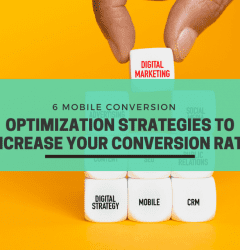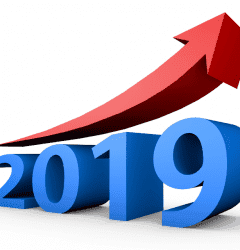This website uses cookies so that we can provide you with the best user experience possible. Cookie information is stored in your browser and performs functions such as recognising you when you return to our website and helping our team to understand which sections of the website you find most interesting and useful.
15 Jan

Title is the single most effective parameter in increasing your Click Through Rate (CTR) on Google Search.
Before we get into how to write a title tag, here are some basics:
What is a title tag?
Title tag specifies the title of a webpage which is visible on your browser tab and SERP. From SEO point of view, it is quite important as when a user searches for a keyword on the search engines, the title tag is (often) the first and most prominent part of your search snippet that is visible to the user. The title tag is also referred to as page title.
The title tag is added through an HTML tag <title> Your title here </title>
Based on the title tag (and other information in the search snippet), the user decides if he/she wants to visit your page. And therefore, the amount of traffic that you will get greatly depends on what you have written in the title tag.
You may have a kickass page on a particular topic, however, if your title tag is not optimized, you may miss out on a lot of good relevant traffic through search engines.
So here are some tips that we have found to work well for our and our clients’ web properties.
11 Effective Tips to Write Good Title Tags
- Include the primary keyword: Your title tag should contain the primary keyword or its meaning. Eg, in the post on cranberry juice above, the primary keyword is ‘cranberry juice’.
- Include secondary keywords: Along with the primary keyword, try to include 1-2 secondary keywords in the title tag. In the post on cranberry juice above, the secondary keyword is ‘benefits’
- Important words towards the beginning: Include the important words towards the beginning. Your important words could be your primary keyword or any modifier, numeric, etc.
- Focus on Readability: Readability of the title tag is most important. Do not distort your title tag to include some bookish thumb rules. The best title tag is the one that gives you the most CTR.
- Shorter, the better: Keep your title tags short, unless you have some really good secondary keywords to add. Do not stuff your title tags just to increase their length. Including more words does not mean more CTR.
- 70 characters is the limit: Presently title tags of more than 70 characters get truncated. So it is advisable to restrict the title tags to less than 70.
- Avoid full stops or periods: When crafting a compelling title, especially for casino-related content, it’s crucial to avoid using full stops or periods. A title represents a starting point, much like the excitement at the beginning of a game, and adding a period can signal an unnecessary finality. This is particularly important when discussing themes like lucky wins, where you want to maintain a sense of ongoing possibility and thrill, keeping the momentum alive for your audience. Just as in casino games, where each spin or card draw holds the potential for a lucky win, your titles should keep readers engaged, anticipating more.
- Avoid more than one pipe: A pipe gives a sense of segregation. More than one pipe often leads to the user not being able to focus on those one or two things that you want to highlight in your title tag. I normally prefer to use the pipe only for segregating the brand name from the main part of the title tag.
- Brand name towards the end: If you do not have a strong brand, your website brand name should come towards the end. If your title tag is long, the brand name can be compromised. Only strong brands should prefer to put the brand name towards the beginning as the brand name will invite more CTR. Often people ask – “Won’t it help to create a good brand name, if you add the brand name towards the beginning?”. Well, the purpose of the title tag is to let the user know what is there in your page. There are several other ways for branding, do not compromise on your CTR for it.
- Avoid full capitalization: Full capitalization is a big no on the Internet for anything as it is considered as an expression of rudeness. So a title tag like “15 Amazing Benefits of CRANBERRY JUICE – Organic Facts” is completely avoidable.
- Use easy to understand words: Use words that are easy to understand for your average audience. Eg. Use brilliant instead of scintillating unless absolutely necessary.
In addition to the above, you can also use the following patterns for your title tags:
- Include Numbers: You won’t believe it, but just adding a number increases your CTR significantly. Eg. Instead of just writing “Health Benefits of Coconut Oil” in your title tag, you can write “11 Surprising Benefits of Coconut Oil”
- Include Punch Words: Punch words or power words help you toy with the emotions of the reader enabling you get higher CTR. So add words like surprising, amazing, best, powerful, etc in your title tags whenever possible.
- Include Date: For certain pages, like “Gold Prices in a City”, you can add the date in the title tag. So your title tag will be “Gold Price in London today – 16 Nov 2017”
- Include Year: Often including the year in your title tag gives you a higher CTR. Eg. “10 Best Weekend Getaways Near Los Angeles in 2018”
- Include Price: Often including price in the title tag helps you get a higher CTR. If you are offering an attractive price as compared to your competitors, this gives you an edge.
- Include Discount or Offer: People are tempted towards offers and, without a doubt, including deals and interesting offers in your title tags gives you a higher CTR.
- Add Product Features: Certain websites, especially e-commerce portals, can include most popular features of the products in the title tag.
Want us to review your title tags? Just leave a comment below.
I elaborated these points during an SEO Roundtable event conducted at InstaOffice, a co-working space in Bangalore.













